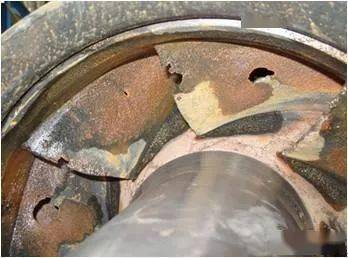Pump cavitation phenomenon and its effects and prevention measures
The cavitation phenomenon of the pump is an inevitable problem during the operation of the pump, but the occurrence of cavitation can be effectively reduced through reasonable prevention and control measures. In practical applications, appropriate prevention and control measures should be selected according to the specific situation to ensure the safe and stable operation of the pump.
1. The concept and mechanism of pump cavitation
Pump cavitation refers to the phenomenon that during the operation of the pump, due to certain reasons, such as the liquid pressure drops below the saturated vapor pressure, the dissolved gas in the liquid precipitates and forms bubbles. These bubbles quickly collapse when the liquid flows to the high-pressure area, resulting in an instantaneous high-pressure shock, causing damage to the flow-through parts of the pump. The mechanism of cavitation mainly includes the formation, movement, collapse and impact of bubbles.

2. The main causes of cavitation
1) The installation height is too high: When the installation height of the pump is too high, the suction pressure of the pump will be reduced, thereby increasing the risk of cavitation.
2) The suction line resistance is large: The elbows, valves, etc. on the suction line will increase the resistance of the fluid, reduce the suction pressure, and promote the occurrence of cavitation.
3) The liquid temperature is too high: When the liquid temperature rises, its saturated vapor pressure will also increase accordingly, and it is easy to form bubbles in the low-pressure area.
4) High gas content in liquid: When the liquid contains a large amount of gas, it is easier to form bubbles in the low-pressure area, aggravating cavitation.
5) Too high pump speed: When the pump speed is too high, the shearing effect of the impeller on the liquid is enhanced, and bubbles are easily generated.
3. Prevention and control measures for cavitation
1) Reduce the installation height of the pump: By reducing the installation height of the pump, the suction pressure of the pump is increased and the occurrence of cavitation is reduced.
2) Optimize the design of the suction pipeline: Reduce the number of elbows and valves on the suction pipeline, reduce fluid resistance, and increase suction pressure.
3) Control liquid temperature: By lowering the liquid temperature or taking insulation measures, the saturated vapor pressure of the liquid is reduced and the formation of bubbles is reduced.
4) Reduce the gas content of the liquid: Set up degassing equipment in front of the pump to reduce the gas content in the liquid.
5) Adjust the pump speed: Under the premise of ensuring the performance of the pump, appropriately reduce the pump speed to reduce the shearing effect of the impeller on the liquid.




